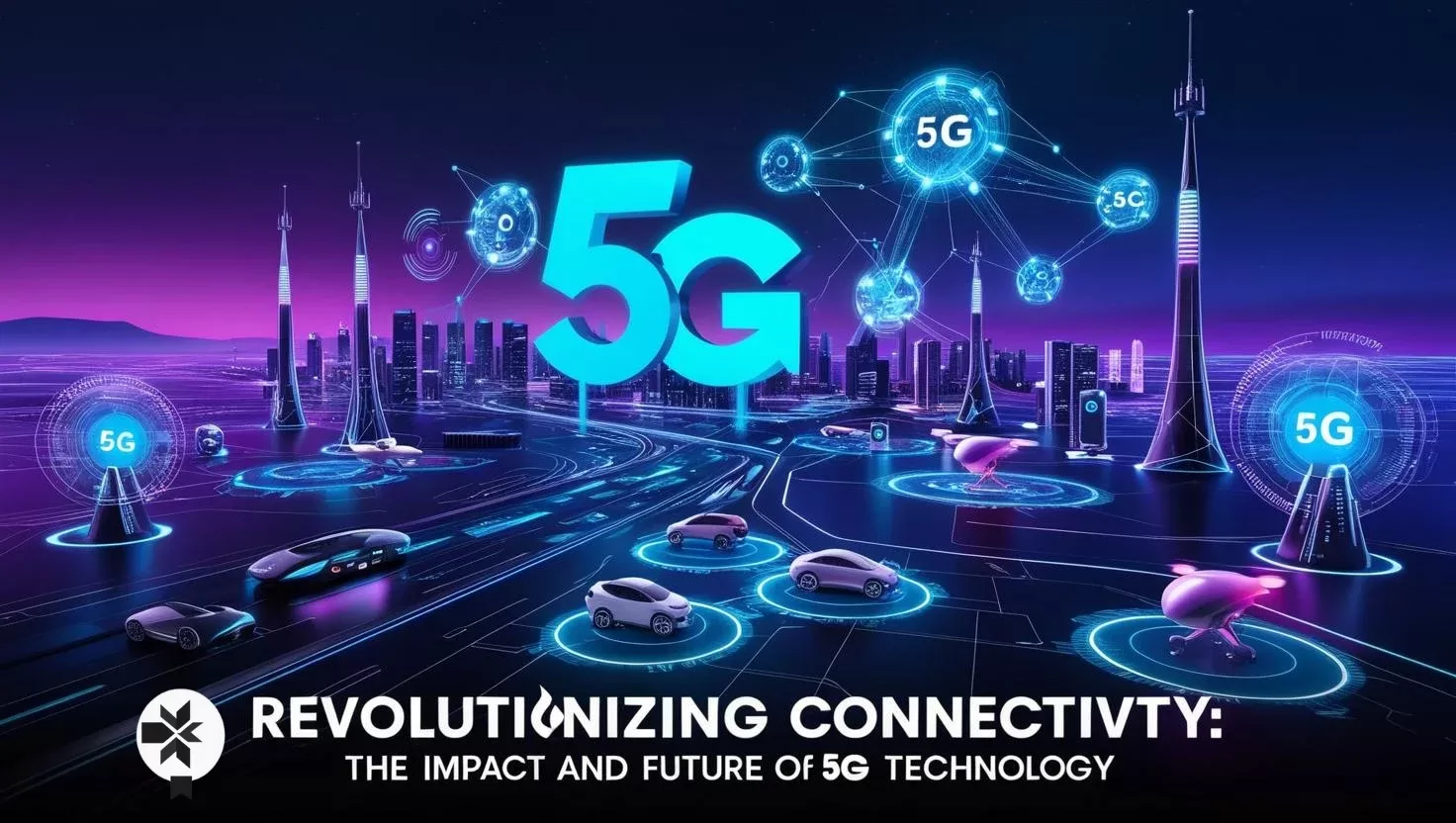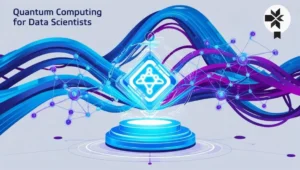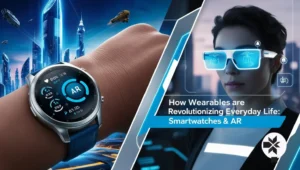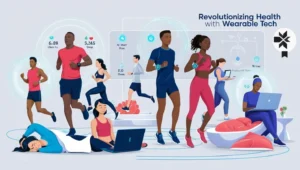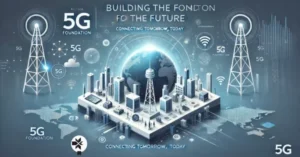The rollout of 5G technology signals a paradigm shift in wireless communication, delivering unprecedented speed, reliability, and connectivity. Far from being a mere upgrade, 5G technology introduces an entirely new architecture that redefines what’s possible in telecommunications and beyond. Understanding the implications of 5G is essential for anyone navigating the fast-evolving digital landscape.
In this comprehensive guide, we’ll explore how 5G is reshaping industries, unlocking revolutionary applications, and paving the way for future advancements, with a projected $1.3 trillion in business value by 2028.
Table of Contents
ToggleFoundations of 5G Technology
5G technology is built on three transformative pillars:
- Enhanced Mobile Broadband (eMBB):
- Achieving speeds up to 20 Gbps.
- Seamless experiences for AR/VR, immersive media, and dense urban connectivity.
- Ultra-Reliable Low-Latency Communications (URLLC):
- Latency as low as 1 millisecond.
- Enabling critical applications like autonomous vehicles and remote surgery.
- Massive Machine-Type Communications (mMTC):
- Supporting 1 million devices per square kilometer.
- Powering smart cities, industrial IoT, and large-scale sensor networks.
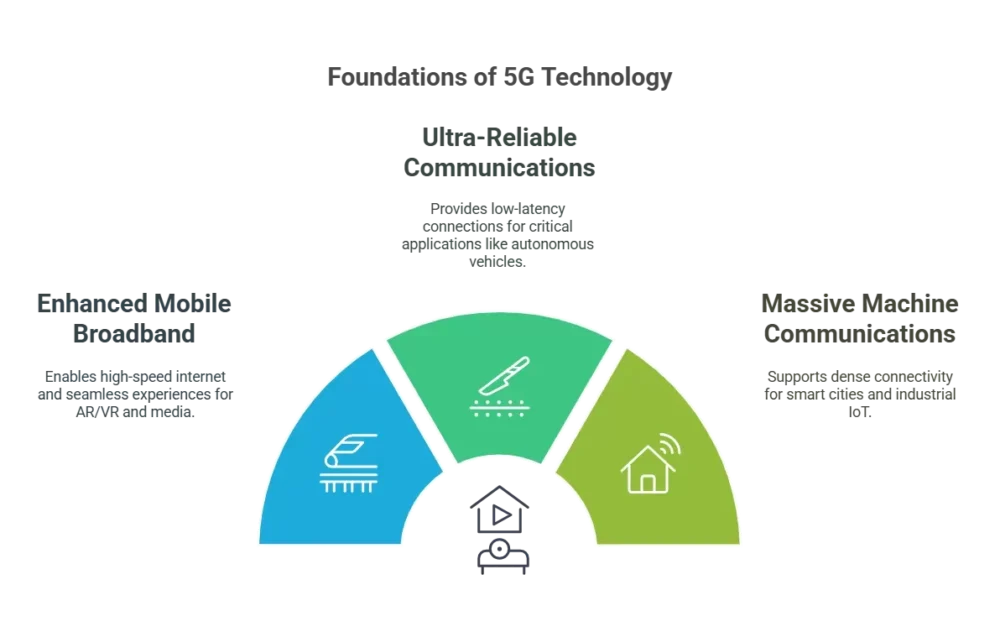
Revolutionary Network Architecture
5G networks introduce a service-based architecture (SBA), moving away from the rigid structures of previous generations. The cloud-native core network comprises:
- Control Plane Functions:
- Access and Mobility Management Function (AMF)
- Policy Control Function (PCF)
- User Plane Functions:
- Optimized for data routing, quality assurance, and traffic measurement.
This design supports unparalleled flexibility, scalability, and dynamic resource allocation.

Spectrum Innovations and Efficiency
5G leverages a multi-band spectrum approach, each band serving unique use cases:
- Low-Band (Sub-1 GHz): Wide coverage for rural areas and IoT.
- Mid-Band (1-6 GHz): Ideal for urban and suburban areas with balanced speed and range.
- High-Band (mmWave): Ultra-fast speeds for dense urban areas and venues.
The combination ensures robust and efficient connectivity across diverse environments.
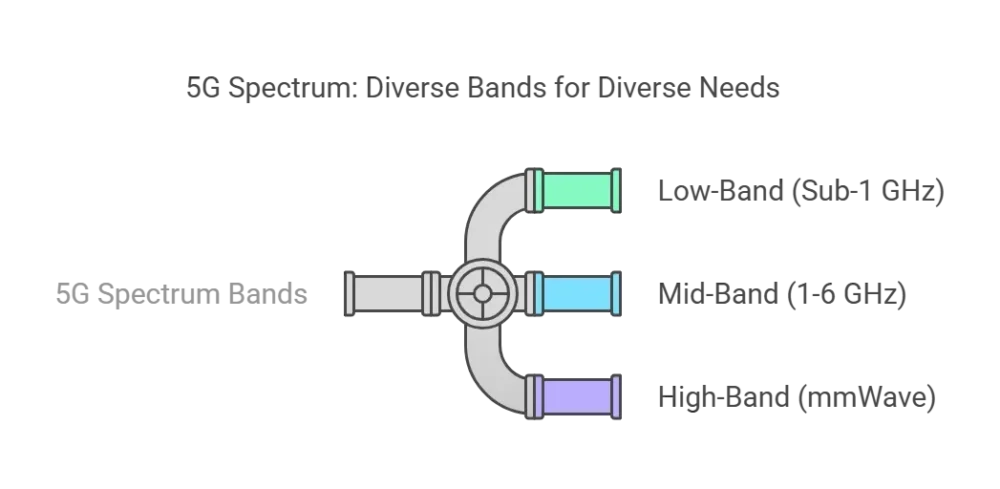
Groundbreaking Features of 5G
- Network Slicing:
- Virtual networks tailored to specific applications.
- Guaranteed QoS for critical services like healthcare and finance.
- Massive MIMO Technology:
- Advanced beamforming for efficient spectrum utilization.
- Enhanced capacity in high-density areas.
- Edge Computing:
- Reduced latency by processing data closer to users.
Essential for real-time applications like autonomous driving.
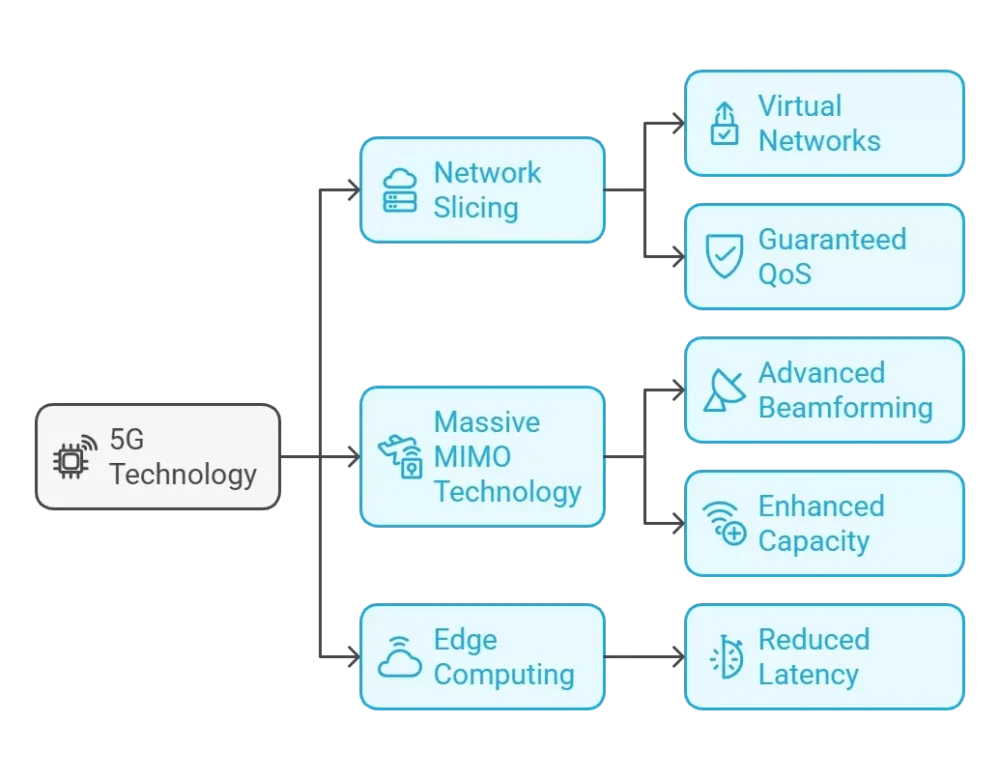
Transforming Industries with 5G Technology
Healthcare:
- Remote Surgery: Ultra-low latency ensures real-time precision.
- Telemedicine: Real-time HD video streaming enhances access to care.
- Wearable Devices: Continuous patient monitoring for proactive health management.
Manufacturing:
- Smart Factories: Real-time data for predictive maintenance and efficiency.
- Digital Twins: Virtual replicas optimize production processes.
- Supply Chain Integration: Streamlined operations and logistics.
Transportation:
- Connected Vehicles: Vehicle-to-Everything (V2X) communication improves safety.
Smart Traffic Systems: Reducing congestion and optimizing urban mobility.
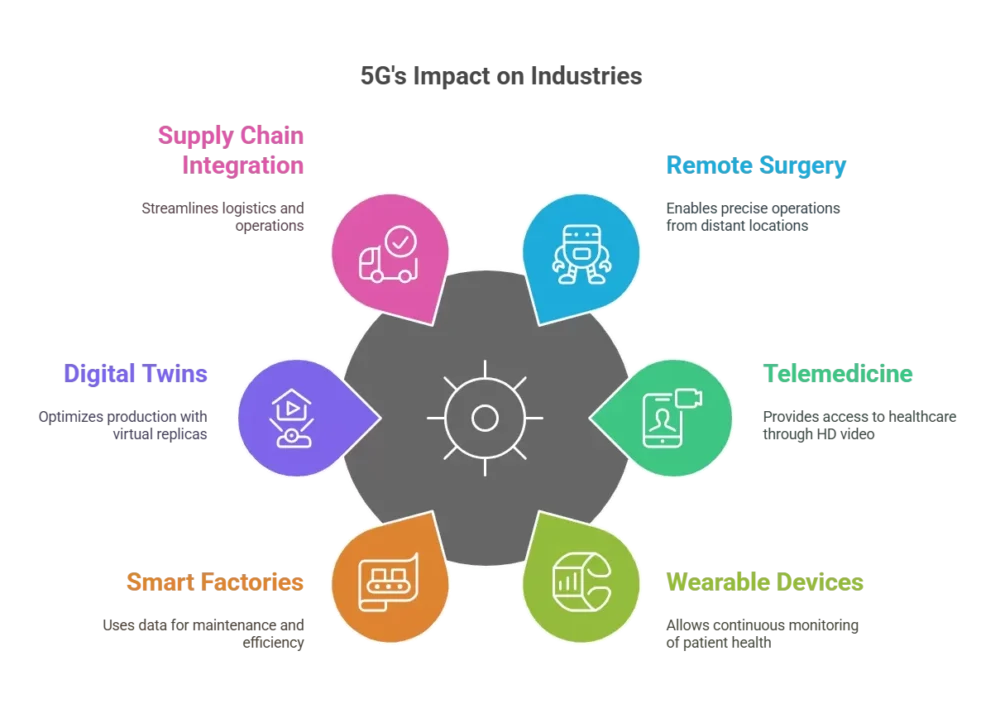
Securing the 5G Ecosystem
With advanced capabilities come new security challenges. The 5G architecture incorporates:
- Zero-Trust Models: Continuous verification of users and devices.
- AI-Powered Threat Detection: Identifying and mitigating risks in real time.
- Network Slice Isolation: Preventing cross-service interference.
Economic and Global Impacts
The economic implications of 5G are monumental:
- Global Market Value: $797.8 billion by 2030.
- Job Creation: Over 22 million new roles by 2025.
- GDP Boost: $2.2 trillion by 2034.
Industries like manufacturing, healthcare, and retail are poised for exponential growth, collectively driving trillions in value.
Future Prospects: Beyond 5G
The journey doesn’t end with 5G. The groundwork is being laid for 6G technology, promising:
- Terahertz Frequencies: Unlocking ultra-high bandwidth.
- Holographic Communications: Revolutionizing interaction and media.
Brain-Computer Interfaces: Seamless integration between humans and machines.
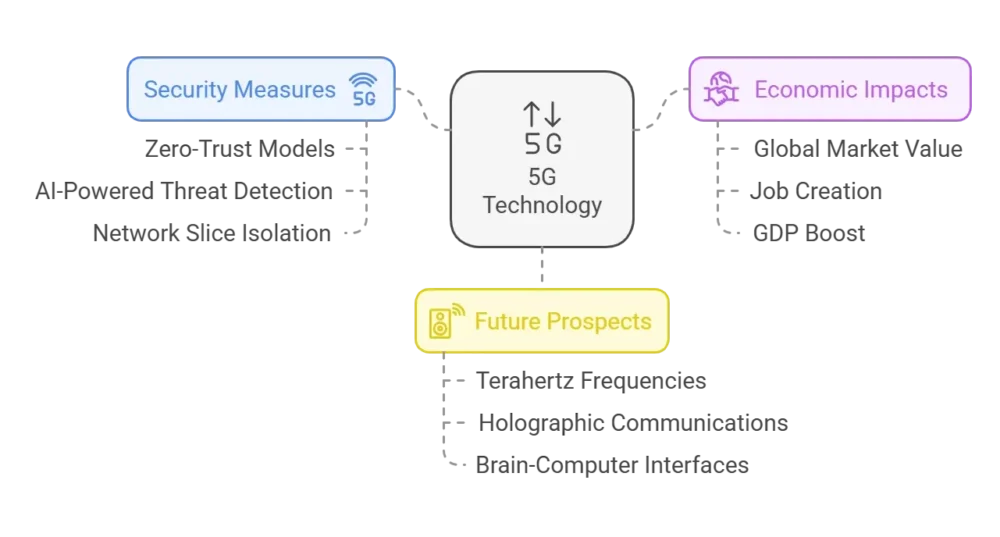
Conclusion
5G technology is more than faster internet—it’s a transformative force connecting people, machines, and industries like never before. By bridging the gap between the physical and digital worlds, 5G is laying the foundation for innovations that will shape our future.
As Dr. Sarah Chen, a telecommunications expert, aptly states:
“5G is not just about faster phones. It’s about connecting everything around us in ways that were previously impossible.”
Dive into the 5G revolution and embrace the future of connectivity! For a comprehensive understanding of the transformative power of 5G and its role in shaping the future of connectivity, don’t miss our detailed blog post 5G Technology: The Ultimate Guide to Next-Generation Wireless Networks [2025].


